Underwater noise pollution is a serious threat to marine life that is being increasingly exposed due to the intensification of human activities. The effects of noise on marine invertebrate deuterostomes, such as Oikopleura dioica, remain scarce. In this study we investigated the effects of underwater noise exposure in O. dioica, developing a machine learning model to recognize its swimming behavior and we employed kymographs for house pumping analysis. Behavioral features were obtained through video recording. Our results suggest that short-term noise exposure does not affect tail beating, while house pumping presents varying discrepancies in velocity and frequency. Differences in tail swimming velocity and house pumping behavior between noise-exposed and control groups indicate that noise influences the relationship between tail movement and house physiology. The machine learning approach described in this study is an effective tool for analyzing O. dioica’s behavior, offering valuable insights into the effects of underwater noise pollution on this organism.
promotor/supervisor feedback
nothing yet




